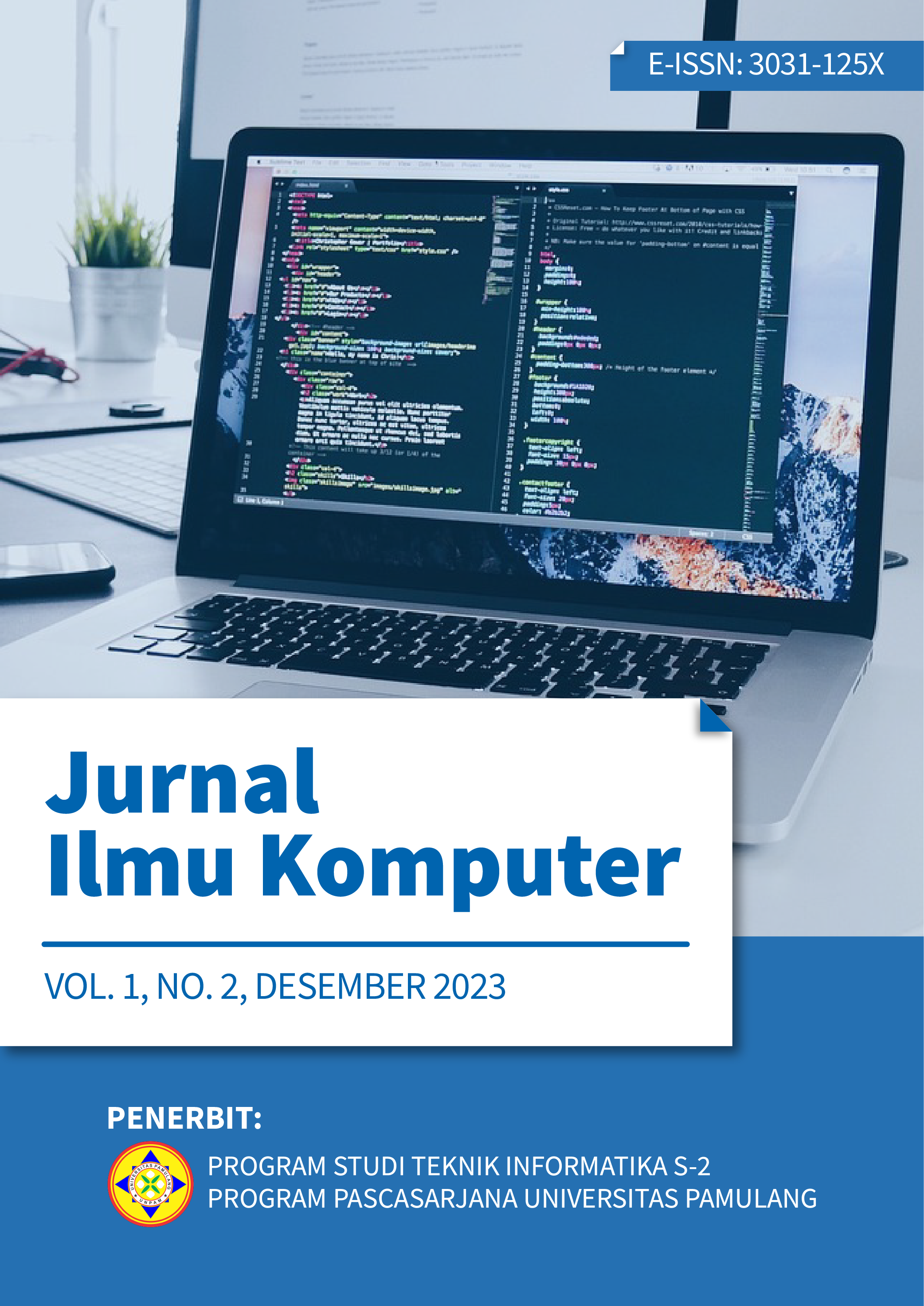Analisis Sentimen Ulasan Aplikasi MyUnpam di Google Play Store Menggunakan Metode Naive Bayes
Keywords:
Sentiment Analysis, Unpam, Naive Bayes, Classification, Data PreprocessingAbstract
Sentiment analysis is the process of automatically extracting, understanding and processing unstructured text data to obtain sentiment information contained in opinions or opinion statements that are positive, negative, or neutral. The data is classified using Naive Bayes. The analysis is divided into 10 stages: crawling, labeling, data cleaning, pre-processing, case folding, stopwords removal, tokenizing, stemming, word weighting, and sentiment classification. Word weighting employs the TF-IDF method (Term Frequency - Inverse Document Frequency). The data is classified into 3 classes: positive, negative, and neutral. Subsequently, the data is evaluated using confusion matrix testing with parameters such as precision, recall, f1-score, and support. The test results indicate that for the 3-class test (positive, negative, and neutral), the best result was achieved with an accuracy of 71.33%.
References
[1] Natalius, Samuel. 2010. Metode Naive Bayes Classifier dan Penggunaannya pada Klasifikasi Dokumen. Bandung: Institut Teknologi Bandung.
[2] J. A. Septian, T. M. Fahrudin, and A. Nugroho, “Analisis Sentimen Pengguna Twitter Terhadap Polemik Persepakbolaan Indonesia Menggunakan Pembobotan TF-IDF dan K-Nearest Neighbor,†J. Intell. Syst. Comput., pp. 43–49, 2019, doi: https://doi.org/10.52985/insyst.v1i1.36.
[3] P. Antinasari, R. S. Perdana, and M. A. Fauzi, “Analisis Sentimen Tentang Opini Film Pada Dokumen Twitter Berbahasa Indonesia Menggunakan Naive Bayes Dengan Perbaikan Kata Tidak Baku,†vol. 1 No.12, pp. 1733–1741, 2017.
[4] H. Annur, “Klasifikasi Masyarakat Miskin Menggunakan Metode Naive Bayes,†Ilk. J. Ilm., vol. 10, no. 2, pp. 160–165, 2018, doi: 10.33096/ilkom.v10i2.303.160-165.
[5] D. Gunawan, R. Dwiza, D. Ardiansyah, F. Akba, and S. Alfariz, “Komparasi Algoritma Support Vector Machine Dan Naïve Bayes Dengan Algoritma Genetika Pada Analisis Sentimen Calon Gubernur Jabar 2018-2023,†J. Tek. Komput. AMIK BSI, vol. VI No.1, 2020, doi: 10.31294/jtk.v4i2.
[6] N. Normah, “Naive Bayes Algorithm For Sentiment Analysis Windows Phone Store Application Reviews,†SinkrOn, vol. 3, no. 2, p. 13, 2019, doi: 10.33395/sinkron.v3i2.242.
[7] D. Darwis, N. Siskawati, and Z. Abidin, “Penerapan Algoritma Naive Bayes Untuk Analisis Sentimen Review Data Twitter Bmkg Nasional,†J. Tekno Kompak, vol. 15, no. 1, p. 131, 2021, doi: 10.33365/jtk.v15i1.744.
[8] Google Play. 2023. myUNPAM: Universitas Pamulang. https://play.google.com/store/apps/details?id=id.unpam&hl=en-ID
[9] R. Watrianthos, S. Suryadi, D. Irmayani, M. Nasution, and E. F. S. Simanjorang, “Sentiment Analysis of Traveloka App Using Naïve Bayes Classifier Method,†Int. J. Sci. Technol. Res., Vol. 8, No. 7, pp. 786–788, 2019, doi: https://doi.org/10.31227/osf.io/2dbe4.
[10] D. Pratmanto, R. Rousyati, F. F. Wati, A. E. Widodo, S. Suleman, and R. Wijianto, “App Review Sentiment Analysis Shopee Application in Google Play Store Using Naive Bayes Algorithm,†J. Phys. Conf. Ser., Vol. 1641, No. 1, pp. 1–7, 2020, doi: https://doi.org/10.1088/1742-6596/1641/1/012043.



